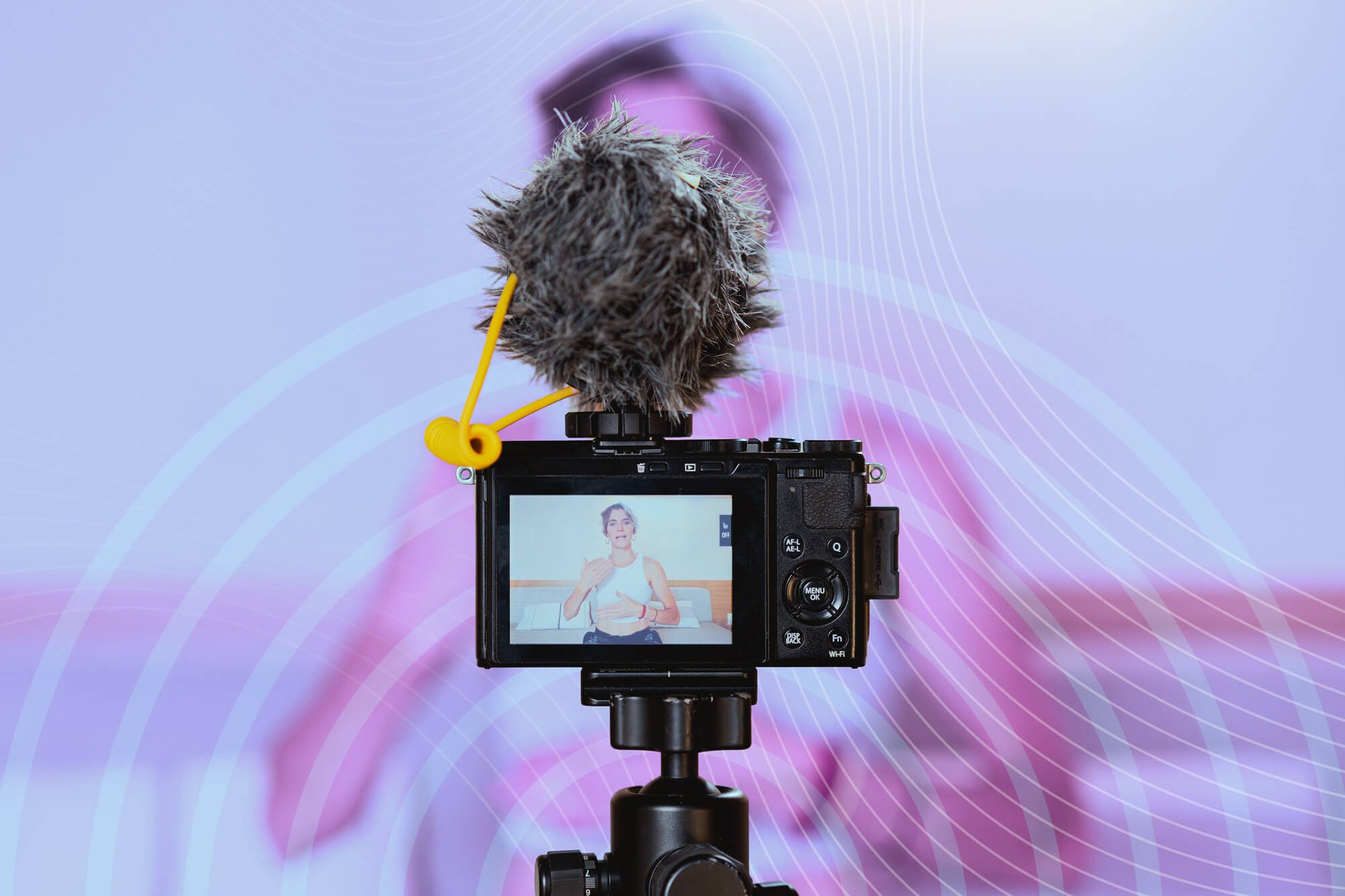It’s not hard to figure out why a global pandemic would create the perfect storm for live video to skyrocket. With many schools closed, lockdowns forcing people to stay home, and in-person events canceled, screen-time went up. Now that live video has found a captive audience, it doesn’t seem to be going away anytime soon.
Just check out these statistics about going live on social media
- Online live streaming grew 99% between April 2019 and April 2020.
- In the six months between March 2020 and August 2020, the video monetization and distribution platform Uscreen saw a 300% increase in live streaming events. When comparing pre-pandemic (January 2020) to mid-pandemic (August 2020) stats, the company saw live events grow by 1468%.
- Experts predict live video to grow 15-fold by 2022 and reach a 17% share of all internet traffic.
- Live content earns 27% more minutes of watch time per viewing—at 24.41 minutes on average—compared to video on demand.
- The live video streaming market is expected to grow to $149.34 billion by 2026.
Creating Live Content
Creating content
What should you talk about when you’re live? You need a plan. Here are some questions to consider:
- Who is your target audience?
- What is the goal—to entertain, inform, or sell? (Or some combination of the three).
- What do you want viewers to do during or after the video? (Buy something, RSVP for an event, enroll in a class).
With goals in mind, you can start thinking about specific content. Here are some ideas and examples from brands who go live on social media regularly:
1. Share troubleshooting techniques
What issues do your customers experience most with your products? Using feedback from your technical support or customer service team members, create a list of issues that you can address on a live stream.
2. Host a Q&A
Sephora held a live Q&A on YouTube with beauty directors Melinda and Myiesha demonstrating the products, offering tips, and responding to viewers’ questions about the brand’s foundation in real-time.
3. Introduce new products or services
Use a “fresh off the assembly line” live video or simply demonstrate the features and benefits of a new product or service.
4. Offer a sneak peek
Oculus sponsored a “first look” live stream on Twitch of gamers trying new releases for the Quest 2, including commentary and tips from an expert.
5. Hold a contest
Everybody loves free stuff and a live contest is sure to pull in some viewers. It presents a few live opportunities. Go live to announce the contest, again to remind people to enter, and finally announce the winner.
6. Demonstrate a DIY project or recipe
For Cinco de Mayo in 2020, Chipotle had a chef go live on Instagram to show viewers how to make the brand’s signature house margarita and four variations (spicy, hibiscus, Paloma, and frozen pineapple).
7. Highlight an unboxing
Unboxing goes beyond just showing potential customers a new product. Going live before a box is even opened builds trust and inspires curiosity. This is especially effective for perishable products, easily damaged during shipping, or come with multiple parts that need to be assembled.
8. Go live at an event
In June 2021, Lego held its first official convention, LegoCon. Using the hashtag #LEGOCON, the brand (and its followers) went live on various social media platforms, including Facebook, YouTube, and Instagram.
9. Do a store walk-through
Many consumers expressed sentiments about missing the experience of in-person shopping at the height of the pandemic. Use live video to share a virtual tour of a brick-and-mortar store from the entrance to exit.
10. Host a webinar
Pre-recorded webinars can feel stale and they sometimes lack the energy provided by live interaction.
Best Practices for Going Live
Long before you go live on social, get your ducks in a row before, during, and after the event.
In advance:
- Ensure you have the right equipment (Camera, tripod, portable wifi device, etc.)
- Decide where and when you’ll go live, as well as what format you’ll choose (Store tour, unboxing, Q&A, product demonstration).
- Create a call to action. Ask viewers to follow you on social media, sign up for an e-newsletter, download a product on your website, or sign up for a free trial.
- Solidify what platforms you’ll use to live stream (Facebook, YouTube, Twitch).
- Promote your event on multiple channels.
The day of the event:
- Check your Internet/wifi. If you share bandwidth, ensure you won’t have an issue with your network.
- Ensure any landing pages, websites, and product downloads are working properly.
- Engage with your viewers and be prepared to relay feedback regarding audio and video quality, as well as questions regarding the event, products or services.
Post-event:
- Track your stats.
- Review the video and gather feedback from team members.
- Promote the recorded event on social media for those who missed the live version.
There you have it. With these tips, you’re ready to go live on social. For more great marketing tips, check out the IZEA blog to find articles like “Marketing Your Business on Instagram” and “Influencers vs Content Creator: What’s the Difference?”
Get Started
Influencers: Are you looking to partner with industry-leading brands? Create a free profile today.
Marketers: The world’s biggest brands trust IZEA’s influencer marketing software and managed solutions. Find out which solution is right for you.








